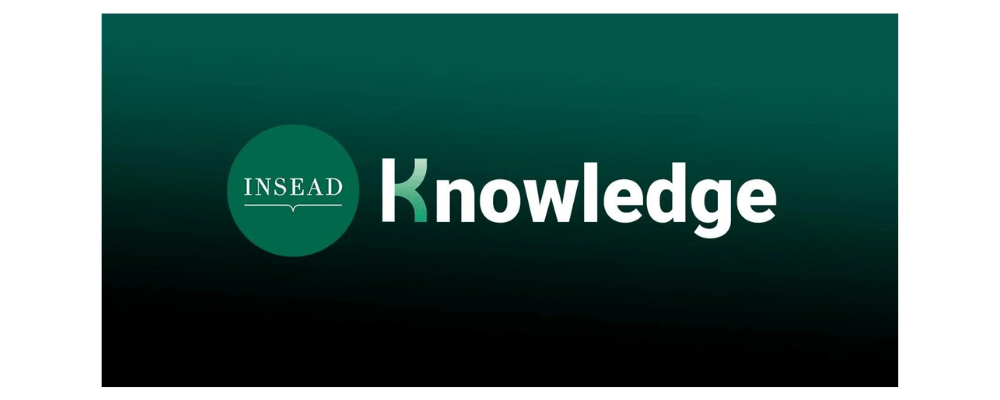In February 2023, two devastating earthquakes claimed more than 55,000 lives and affected over 10 million people in Turkey and Syria. Responding to this massive humanitarian crisis is everyone’s business – including private companies.
Indeed, after the Turkey-Syria earthquakes, semiconductor technology company ASML matched employee donations made to Turkish NGO Ahbap, and IKEA donated funds through its IKEA Foundation, among other acts of generosity by corporate donors.
Such post-disaster responses by the private sector have been observed all over the world: After Hurricane Harvey, the Coca-Cola Company donated water, milk and energy drinks, while Johnson & Johnson sent hygiene kits to the region. But while offering monetary and in-kind donations makes a difference, the private sector can make an even greater impact on response and recovery when companies leverage their core capabilities and ready themselves well before a disaster. This requires commitment and preparedness.
A disrupted community is a disruption to business
In the wake of a disaster, companies may be directly or indirectly affected – be it their employees, physical stores, products or the economic situation in general. This is why disaster preparedness is not merely a humanitarian imperative, but also essential to business continuity.
Walmart’s response to Hurricane Katrina is a good example of alignment between business continuity and disaster preparedness for humanitarian reasons. The company was praised for its efficient response. In fact, Walmart reached the affected region even before the United States Federal Emergency Management Agency (FEMA) did and distributed supplies such as food and water to the community. It even transformed its stores and parking lots into community hubs where people could get supplies and do their laundry.
Such response was possible because Walmart was ready when Hurricane Katrina hit; the company constantly monitors supply chain risks, including natural disasters. It had put in place contingency plans to minimise disruption to the supply chain and reopen stores as soon as possible. Once it managed to restore its supply chain, it could then contribute to humanitarian relief by facilitating aid delivery.
Clearly, a well-prepared company can recover faster (if affected) and even extend timely help to those in need. From the perspective of business operations, preparing for and supporting humanitarian relief operations allows the company to build adaptiveness and agility and, in turn, improve supply chain resilience, which is aligned with the goal of business continuity.
Beyond donations: leveraging core capabilities and strategic partnerships
Walmart’s response shows what a company can do by leveraging its core business capabilities and resources in retail logistics. Similarly, after the Turkey and Syria earthquakes, online shopping websites such as Trendyol, Hepsiburada and Yemeksepeti set up systems to enable donors to purchase in-kind aid to be delivered from the companies’ warehouses to the affected population by the main coordinating body known as the Disaster and Emergency Management Presidency (AFAD). Logistics companies such as MNG Kargo allowed individuals to deposit solicited in-kind donations such as blankets and clothes at their stores all over the country, which were sent to the affected regions at no cost.
But beyond logistics, companies may have other core competencies, depending on their sector, size, infrastructure, network, risk management tools and procedures put in place. For instance, the health, nutrition and bioscience company Royal DSM is creating fortified, nutritious food solutions and improving food affordability and availability through its partnership with the United Nations World Food Programme (WFP).
Partnering with a humanitarian organisation is another way to get involved, which should ideally start from the preparedness stage through the response and recovery phases. For example, Amazon has established Disaster Relief Hubs with prepositioned inventory from which partners such as Save the Children can tap on during a disaster response.
Alternatively, a company can collaborate with competing firms to support a relief operation. An example is the Logistics Emergency Team (LET). It consists of four major logistics companies including Agility, UPS, A.P. Moller – Maersk and DP World to support the United Nations Logistics Cluster when called upon by WFP, the cluster lead.
The coalition effectively increases transportation capacity and makes services such as customs clearance, warehousing and information management more accessible. In response to the Turkey and Syria earthquakes, LET evaluated the local logistics and storage capacity, supported operations through airlifts and published flight routing data to help identify available air cargo space for humanitarian operations. Beyond emergency response, LET contributes to preparedness by conducting logistics capacity assessments in high-risk areas that inform WFP.
Understandably, when companies compete in the for-profit space but collaborate in support of a humanitarian cause, it could give rise to unexpected dynamics. But while companies may be wary of collaborating with their competitors, such “coopetition” structure can result in synergies and more efficient processes. Moreover, it can offer co-learning opportunities for companies to build adaptability and agility, while increasing employee and customer satisfaction.
Preparing for the challenges of humanitarian relief
First and foremost, companies that decide to be actively involved in humanitarian relief need to be committed and prepared to manage potential risks. In the case of Walmart, it set up a Global Emergency Management department that constantly collects and analyses data to identify, assess and respond to events such as natural disasters, disease outbreaks and other crises. The team uses data from external sources such as governmental agencies, weather reports and disease outbreak data to perform independent risk and demand assessments. The department also trains associates on preparedness and business continuity after disasters.
An important feature of its organisational structure is its flexibility in times of emergency. The department, which is normally staffed by six to ten employees, can expand to 50 people, with involvement from senior managers in different functions where necessary. More importantly, Walmart gives a great degree of autonomy to district and store managers, allowing them to make swift decisions without the hindrances of bureaucracy. This is in stark contrast to AFAD, which was harshly criticised for its top-heavy structure that led to its slow response in the recent earthquakes.
In the case of partnerships, companies that are already operating in intense contexts due to the massive devastation and human suffering are further challenged by diverse stakeholder priorities. To overcome these challenges, the companies involved should set a clear purpose and commitments towards a common goal and establish partnership rules and operating guidelines from the start.
For example, LET, the pro-bono coalition, is activated upon the request of WFP (or the Logistics Cluster led by WFP) to support humanitarian response to disasters that impact more than 500,000 people. LET is typically active for three to six weeks post-disaster, with the option of reactivation if necessary. This unique partnership has been studied for years by the INSEAD Humanitarian Research Group.
Once all stakeholders are on board, it is essential to work towards a structured and detailed approach of what will be done, as well as when and how. These plans for operations, coordination of human resources and assets, timeframe, locations and exit strategy contribute towards standard operating procedures that can be readily deployed. To develop and improve these plans, a steering committee can provide the global-level partnership governance structure.
A route towards win-win: recovering together
When communication is disrupted, infrastructure is destroyed and the lives of customers, employees and their families are put on hold, nothing is usual – and neither is business. Business continuity after a disaster cannot be viewed separately from humanitarian response and recovery.
Donations are invaluable, but private companies can do more with their core capabilities. Supporting humanitarian relief at every phase of the disaster – preparation, response, recovery – individually or through partnerships not only helps the affected populations, but also builds a company’s supply chain resilience, as well as its standing as a socially responsible organisation. Swift business recovery can only happen with expeditious recovery of the community it serves. This is best achieved by working and preparing together.
“INSEAD, a contraction of “Institut Européen d’Administration des Affaires” is a non-profit graduate-only business school that maintains campuses in Europe, Asia, the Middle East, and North America.”
Please visit the firm link to site






